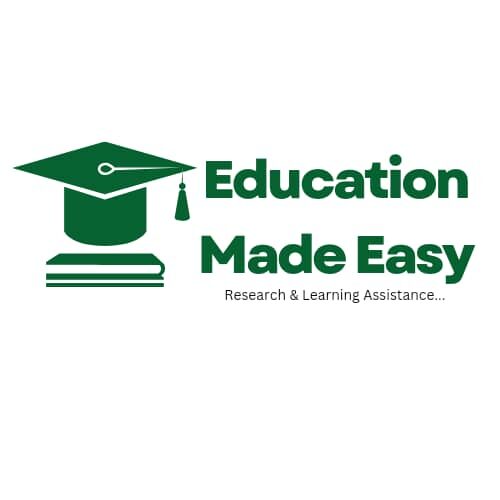In today’s fast-paced digital world, successful learning requires more than just traditional study methods birthing the need of the importance of the 10 Essential Tools for Successful Learning in the Digital Age. With the vast availability of resources and technology, students have access to a wide range of tools that can significantly enhance their learning experience. Whether you’re a high school student preparing for exams, a college student tackling complex research projects, or an adult learner seeking to expand your skills, knowing the right tools can make all the difference.
Digital tools not only make learning more accessible but also more efficient and enjoyable. From online learning platforms that offer courses on virtually any subject to cloud storage solutions that keep your files safe and accessible from any device, there’s no shortage of resources available to help learners succeed. Additionally, tools like collaboration apps, note-taking platforms, and time management tools have become essential for staying organized, productive, and connected in a learning environment that is increasingly moving online.
In this article, we’ll explore 10 Essential Tools for Successful Learning in the Digital Age. These tools will help you stay focused, organized, and engaged, while also providing the flexibility to learn at your own pace. Whether you’re studying from home or on the go, these digital tools will empower you to maximize your learning potential in the digital age.
-
Online Learning Platforms
Online learning platforms have revolutionized the educational landscape, offering students unprecedented access to a vast array of knowledge. Platforms like Coursera, Udemy, and Khan Academy provide a diverse selection of courses across various subjects, empowering learners to study at their own pace. Whether you aim to enhance your skills in programming, delve into the sciences, or explore the arts, these platforms cater to a wide range of interests and learning styles.
The flexibility of online learning platforms allows students to balance their studies with other commitments, making education more accessible than ever. This adaptability is particularly beneficial for those juggling work, family, or other responsibilities. Furthermore, many online learning platforms offer certificates upon course completion, which can significantly enhance a learner’s resume and demonstrate their commitment to ongoing education. In the context of 10 Essential Tools for Successful Learning in the Digital Age, these platforms cater to a wide range of interests and learning styles.
-
Collaboration Tools
Collaboration tools play a crucial role in facilitating teamwork and communication in an increasingly interconnected educational environment. Applications like Slack, Microsoft Teams, and Google Workspace allow students to collaborate on projects, share resources, and communicate seamlessly, regardless of their physical location. These tools support real-time messaging, file sharing, and video conferencing, making it easier for students to work together on assignments or study sessions. By fostering a collaborative learning atmosphere, these collaboration tools encourage peer-to-peer interaction, enhance problem-solving skills, and cultivate a sense of community among learners. As part of the 10 Essential Tools for Successful Learning in the Digital Age, these tools support real-time messaging, file sharing, and video conferencing, making it easier for students to work together on assignments or study sessions.
-
Note-Taking Apps
In the digital age, traditional pen-and-paper note-taking has evolved into a more efficient and organized method through the use of note-taking apps. Tools like Evernote, OneNote, and Notion allow students to capture and organize their notes in a digital format, making it easy to access and review information anytime, anywhere. These note-taking apps offer features such as tagging, search functionality, and the ability to include multimedia elements like images and audio recordings, enriching the learning experience. With the ability to sync across devices, students can stay organized and keep their study materials at their fingertips. These note-taking apps are among the 10 Essential Tools for Successful Learning in the Digital Age, offering features such as tagging, search functionality, and the ability to include multimedia elements like images and audio recordings, enriching the learning experience. Furthermore, many note-taking apps promote active learning strategies, encouraging students to summarize, reflect, and engage with the material in a more meaningful way. This shift not only enhances retention but also prepares learners for a more dynamic approach to education, making note-taking apps an invaluable resource for today’s students
-
Cloud Storage Solutions
Cloud storage solutions have revolutionized the way students manage and access their files. Services like Google Drive, Dropbox, and Microsoft OneDrive allow users to store documents, presentations, and other essential materials in a secure online environment. This accessibility ensures that students can retrieve their files from any device—be it a laptop, tablet, or smartphone—eliminating the worry of losing important assignments or research papers.
One of the key advantages of cloud storage is the collaborative aspect it offers. Students can easily share documents with classmates, enabling real-time editing and feedback. This feature is particularly beneficial for group projects, where multiple contributors need to access and modify the same file. Additionally, many cloud storage platforms come with built-in productivity tools, such as word processors and spreadsheet applications, allowing users to create and edit documents directly within the platform.
Moreover, cloud storage enhances security for student data. With automatic backups and encryption, users can rest assured that their files are protected against loss or unauthorized access. This peace of mind encourages students to focus on their studies without the distraction of worrying about data management. Overall, cloud storage solutions not only streamline file organization but also promote collaboration and security, making them indispensable for modern learners.
-
Time Management Tools
Effective time management is critical for academic success in an age where distractions abound. Time management tools, such as Todoist, Trello, and Asana, help students organize their tasks, set priorities, and stay focused on their studies. These applications offer features like to-do lists, project timelines, and deadline reminders, empowering students to take control of their schedules.
By breaking down larger tasks into smaller, manageable steps, these tools make it easier for students to tackle their workloads without feeling overwhelmed. For instance, a student preparing for final exams can create a study plan that allocates specific time slots for each subject, ensuring that they cover all necessary material. Additionally, many of these apps provide visual representations of tasks and deadlines, allowing users to see their progress at a glance and adjust their schedules as needed.
Furthermore, time management tools can promote accountability. By setting deadlines and reminders, students are less likely to procrastinate and more likely to stay committed to their study goals. Some tools even allow users to track the time spent on specific tasks, providing valuable insights into their productivity patterns. In a world filled with distractions, harnessing the power of time management tools can significantly enhance a student’s ability to succeed academically.
-
E-Book Libraries
E-book libraries have made a vast array of academic resources readily available to students, transforming the way they access literature and study materials. Platforms like JSTOR, Google Books, and Project Gutenberg offer a treasure trove of e-books, academic papers, and other educational content, often free or at a reduced cost. This accessibility enables students to conduct research and find reference materials without the constraints of physical libraries.
One of the significant advantages of e-book libraries is the convenience they provide. Students can search for specific titles or subjects using keywords, making it easier to find relevant information quickly. Many e-books also come equipped with features like bookmarks, highlights, and annotations, allowing students to engage with the material actively. This interactivity can enhance comprehension and retention, making study sessions more productive.
Additionally, e-book libraries often feature the latest research and publications, ensuring that students have access to the most current information in their fields. This immediacy is particularly important in fast-evolving disciplines such as technology, science, and business. As students increasingly rely on digital resources, e-book libraries have become essential tools for academic success, providing an expansive and easily navigable repository of knowledge that enhances the learning experience.
-
Video Conferencing Tools
Video conferencing tools have become indispensable in today’s educational landscape, especially with the rise of remote learning. Platforms like Zoom, Microsoft Teams, and Google Meet enable students to attend virtual classes, engage in real-time discussions, and collaborate on projects from the comfort of their homes. These tools facilitate face-to-face interactions, making online learning feel more personal and interactive.
One significant benefit of video conferencing is the ability to connect with tutors or mentors for personalized academic support. Students can schedule one-on-one sessions to clarify doubts, receive guidance on challenging subjects, or seek assistance with research projects. This direct interaction enhances the learning experience and provides an opportunity for immediate feedback.
Moreover, video conferencing tools often include features such as screen sharing, breakout rooms, and chat functions, which further enrich the educational experience. For instance, breakout rooms allow small groups of students to work collaboratively on assignments, fostering teamwork and communication skills. As education continues to evolve, the integration of video conferencing tools ensures that learners can access the support they need while maintaining meaningful connections with educators and peers, enhancing the overall educational journey.
-
Mind Mapping Tools
Mind mapping tools are powerful aids that can significantly enhance the learning process by helping students organize their thoughts visually. Applications like MindMeister, XMind, and Coggle allow users to create dynamic diagrams that illustrate relationships between concepts, making it easier to grasp complex information. By breaking down subjects into manageable parts, mind maps promote active engagement and retention.
Students can use mind mapping to brainstorm ideas for research papers, outline study materials, or summarize lectures. The visual format helps to simplify intricate topics, allowing learners to see how different elements connect. For example, when studying a multifaceted topic such as “Global Economic Trends,” a student can create a mind map that links various factors like inflation, employment rates, and international trade.
Additionally, mind mapping tools often encourage creativity and critical thinking. By visually representing their ideas, students can explore new connections and perspectives that they might not have considered otherwise. This method of organizing information not only aids in understanding but also promotes a more holistic approach to learning. Incorporating mind mapping tools into study routines can empower students to tackle challenging subjects with confidence and clarity.
-
Self-Assessment Tools
Self-assessment tools play a crucial role in fostering independent learning and self-reflection among students. Platforms like Quizlet and Kahoot! offer interactive quizzes and flashcards that allow learners to evaluate their understanding of various subjects. These tools provide immediate feedback, helping students identify areas of strength and those that require further study.
Engaging with self-assessment tools encourages students to take ownership of their learning. For instance, a student preparing for exams can create custom quizzes based on their notes, allowing them to reinforce key concepts and track their progress. The gamified elements of many self-assessment platforms can also make studying more enjoyable, transforming what might be a monotonous task into an engaging experience.
Moreover, self-assessment tools promote active learning strategies, encouraging students to reflect on their performance and adjust their study methods accordingly. By regularly using these tools, learners can develop a more robust understanding of their academic capabilities and enhance their study skills. As education evolves, integrating self-assessment tools into learning routines is essential for helping students achieve academic success and fostering a culture of lifelong learning.
-
Language Learning Apps
Language learning apps have transformed the way students acquire new languages, making the process more accessible and engaging than ever before. Tools like Duolingo, Babbel, and Rosetta Stone provide interactive lessons and exercises that cater to various learning styles, allowing users to practice speaking, listening, reading, and writing skills at their own pace. These apps are precious for students pursuing language studies or those looking to enhance their communication skills for academic and professional purposes.
The gamified approach of many language learning apps keeps users motivated and encourages daily practice. Features such as progress tracking, rewards for completing lessons, and community engagement create a fun and supportive learning environment. Students can set personal goals and see their advancement, fostering a sense of accomplishment.
Additionally, language learning apps often include cultural insights and real-world context, enriching the educational experience. By integrating vocabulary and grammar lessons with practical usage, students can develop a deeper understanding of the language and its nuances. As globalization continues to connect people across borders, language learning apps are essential tools for students looking to broaden their horizons, engage with diverse cultures, and enhance their academic and career prospects.




